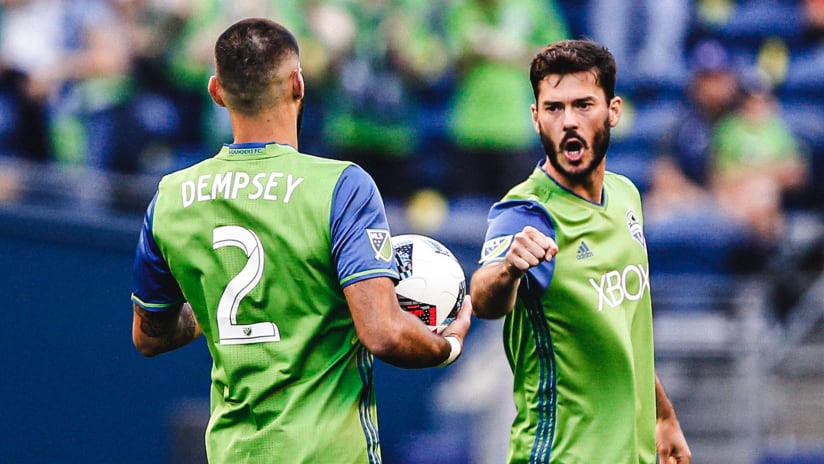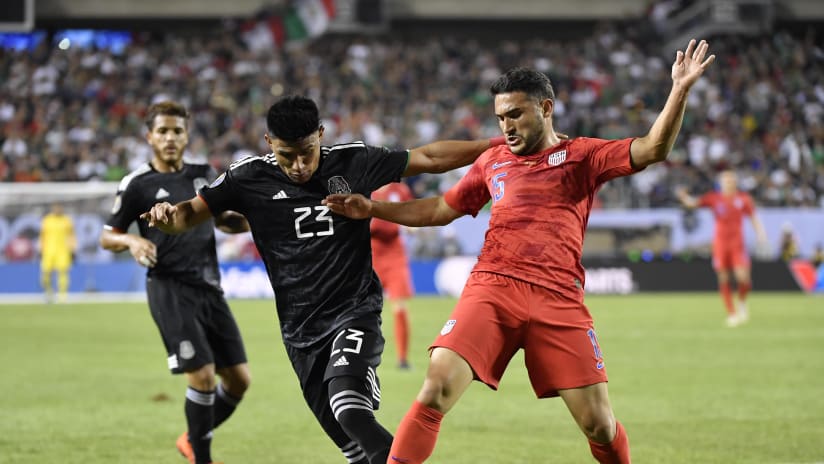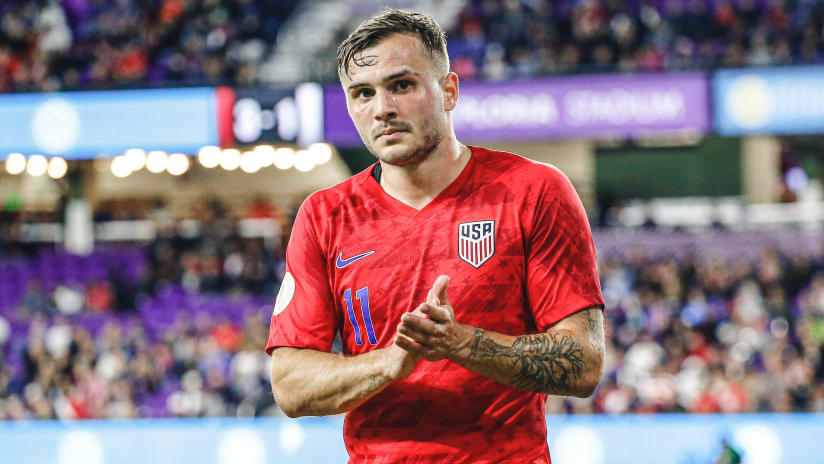It’s here.
Nobody’s ever quite ready for the Mexico-U.S. World Cup qualifying matches. Outside competitive tournaments, the home-and-away fixture in the final CONCACAF qualifying round is inevitably the biggest day on the calendar in the entire of every cycle. And as much as fans and players anticipate the occasion, it always seems to be a bigger thing than you imagine.
Friday’s meeting between the two in Columbus is a momentous occasion simply because it’s a Mexico-U.S. game, but it’s actually about as forgiving a meeting as these two have ever played in the Hexagonal. Friday marks the first game of the qualifying round, meaning both teams have nine more games to right the ship if things don’t go well in Columbus. And it’s worth repeating that half of the six-team CONCACAF group goes to the 2018 World Cup, while the fourth still has an opportunity to qualify via playoff.
That won’t dim the atmosphere, which should be charged just days after the end of an election cycle that concluded earlier this week. Nobody’s quite certain what to expect.
At least on the field, the answers are a bit easier to come by on the U.S. side. And while some are positive, a few others are a bit more challenging.
- MATCHCENTER: Follow USAvMEX with us on Friday
For one, Sounders forward and recently crowned MLS Rookie of the Year Jordan Morris lost his roster spot to Alan Gordon when he pulled up with a hamstring injury last weekend. Morris was a likely backup considering both Bobby Wood and Jozy Altidore are also in ripping form, but he definitely had a shot.
Now, the only Sounders connection to the senior team on this week’s roster is DeAndre Yedlin, and it’s hard to imagine not seeing him in the starting XI once the game kicks off.
Yedlin, of course, moved to Championship side Newcastle before the season, and he’s played the majority of the season at right back. But he’s played a bit in the midfield for manager Rafa Benitez as well, and U.S. manager Jurgen Klinsmann hasn’t been shy about pushing Yedlin up to the right wing at times in the past either. Good money is always on Yedlin starting at right back first, but there aren’t a ton of easy options on the right wing. Yedlin’s a better fullback than a midfielder, but with Klinsmann you can never count anything out entirely.
Even with Geoff Cameron out with an injury, the U.S. back line actually looks fairly solid. John Brooks was consistently the team’s best player in the 2016 Copa America, the last major tournament this team played, and Cameron has replacement options. Omar Gonzalez, for instance, recently won a championship in Liga MX starting for Pachuca.
The bigger question is in the midfield.
Klinsmann has an enormous decision to make come game time, and it will most likely decide how this team plays. He essentially has two mainline options as to how to array his front six. Either play it straight with a more conservative 4-4-2, or stuff the midfield with options and attempt to go for it.
Here’s what the 4-4-2 option could look like.
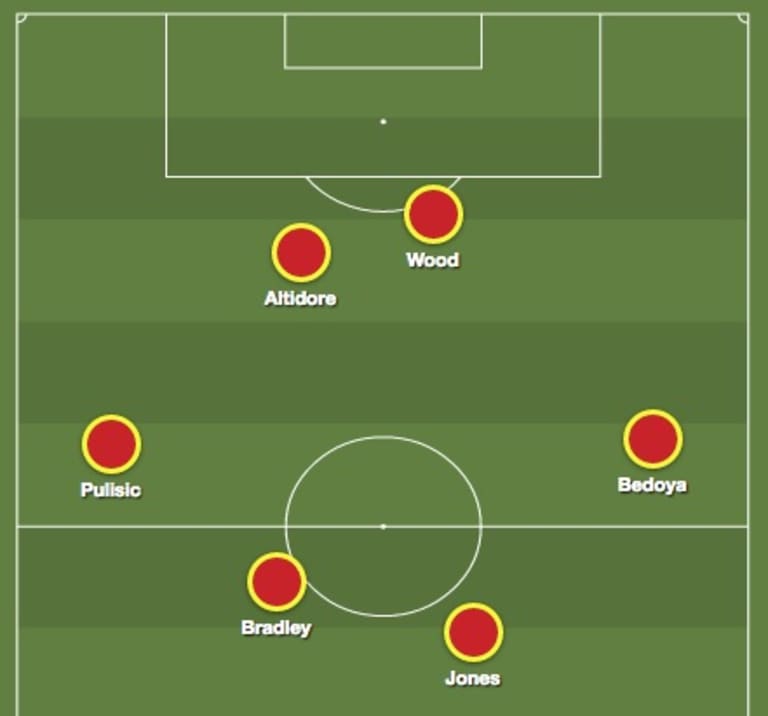
And the 4-2-3-1.
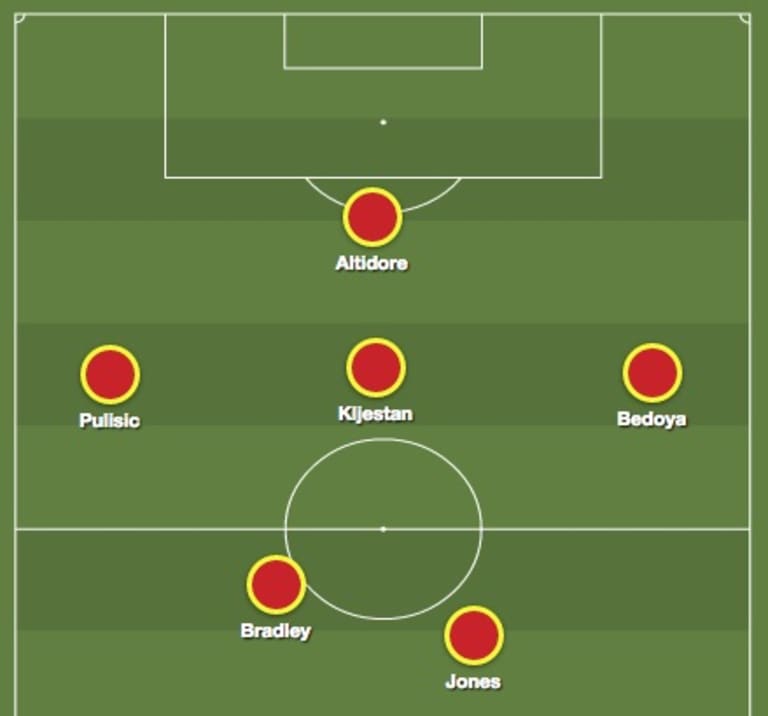
The difference, obviously, is whether Klinsmann feels comfortable dropping either Wood or Altidore (and it’d almost certainly be Wood in that scenario) in favor of midfielder Sacha Kljestan, who’s currently nursing a broken nose. Kljestan is the only real option to play the No. 10 on this roster, and assuming Jermaine Jones is healthy he’s the only real option to fill a holding No. 6 role. Michael Bradley could do it, but Klinsmann’s made it clear he doesn’t see Bradley as a dedicated holding midfielder. As much as you may want to see it, you might as well scratch off that notion right now.
That leaves you with the more likely of the two (on paper), which is the 4-4-2. At its best, it creates a scenario where Altidore can drop back and find a hard-charging Bradley, a partnership that’s guided Toronto FC within three wins from its first-ever MLS Cup trophy. If Jones can stay positionally sound, this isn’t a bad way to go, even if it’s practical to a fault.
The problem is in line connectedness. Altidore is a forward, and you don’t want him dropping too deep. Mexico will do its best to play keep-away, which means Bradley could have trouble stepping up and finding his forwards in lieu of lumped long balls. That’s not to say it can’t work - Bradley isn’t a bad deep passer - but it basically concedes part of the field to Mexico. You’re admitting from the jump you’re going to play the entire game mostly on the counter.
In the end, though, it’s worth it to stow Kljestan in favor of a Wood/Altidore partnership. Under Klinsmann’s ethos the U.S. simply plays better with two strikers. The Clint Dempsey-Wood pairing was the genesis of so many quality moments in the Copa America, and Altidore is in even better form than Dempsey was in the summer. I think it’s worth it to give them a go and perhaps bring Kljestan on late if you need a spark.
In any case, the U.S. has a shot, if for no other reason than because it’s Columbus. The low on Friday night in Central Ohio could dip into the 20s, which is exactly what the USSF hopes every time it schedules Mexico at MAPFRE Stadium. The U.S. wants Mexico to be out of its element, and it invariably is in Columbus. That’s why it’s continually the home to Dos-A-Cero. Mexico simply hates playing there.
This is not a do-or-die scenario for either team, which could take a bit of the edge off if it wasn’t otherwise one of the world’s biggest international rivalries. Instead, expect fireworks. In this game, they never fail to arrive.


